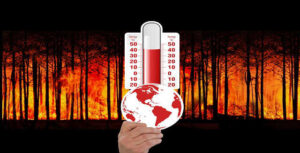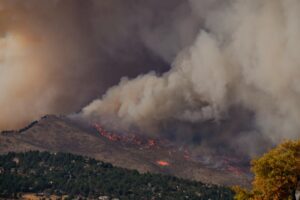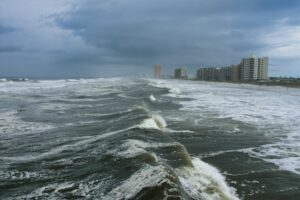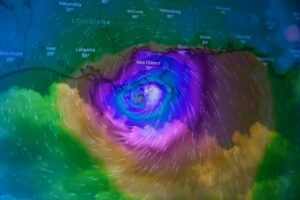Hurricane Erin Unveiled: Tracking the First Storm of 2025
The 2025 Atlantic hurricane season swung into action with the development of Hurricane Erin—an early reminder that preparation and vigilance are vital. From its origins as a tropical wave off Africa’s west coast to its potential impacts across the Caribbean and beyond, Hurricane Erin offers a perfect case study in modern storm tracking, forecasting, and preparedness. Whether you live along the coastline or simply want to stay informed, this deep dive will equip you with the facts, stats, and tips you need to navigate the season with confidence.
Introduction
Imagine waking up to an animated spaghetti model map, colorful lines crisscrossing the Atlantic, each representing a possible path for a budding storm. That’s exactly what forecasters saw when Tropical Wave Invest 97L began its journey toward becoming Hurricane Erin. As the first named storm of a season NOAA now predicts to be above average in activity, Erin’s evolution underscores both the power of cutting-edge meteorology and the enduring need for community readiness. This blog unpacks Erin’s lifecycle, demystifies the science behind its track forecasts, and shares practical tips to keep you—and your loved ones—safe.
1. From Invest 97L to Hurricane Erin: A Meteorological Journey
In early August 2025, satellite imagery detected a well-organized tropical wave—Invest 97L—emerging from the African coast. Over the following days:
- Organization & Intensification: Warm sea surface temperatures (>28°C) and low wind shear allowed the disturbance to consolidate. By August 9, it was officially designated Tropical Storm Erin by the National Hurricane Center (NHC).
- Rapid Strengthening: Erin’s central pressure dropped swiftly, and sustained winds climbed above 74 mph, earning it hurricane status within 24 hours.
- Key Statistics:
- Peak sustained winds: 85 mph
- Minimum central pressure: 978 mb
- Forward speed: 12 mph
Understanding Erin’s rapid intensification is crucial: with climate trends pointing to warmer oceans, storms can escalate faster than ever before.
2. Demystifying Spaghetti Models: Why Every Line Matters
That colorful spaghetti chart isn’t just art—it’s a composite of global forecast models, each projecting a storm’s potential trajectory. Key takeaways:
- Multiple Scenarios: No single line is gospel; rather, the fan of tracks indicates uncertainty ranges.
- Model Consensus: When most lines cluster, confidence rises. Divergence signals higher unpredictability.
- Real-World Impact: During Erin’s peak, models showed three primary corridors:
- Northern Leeward Islands Impact
- Turn Toward Bermuda
- Recurrence into Open Atlantic
By monitoring ensemble guidance on the NHC’s official tracker, residents gain valuable time to prepare or adjust plans.
3. Historical Context: Early-Season Storms and Their Lessons
Early-season hurricanes like Erin aren’t unprecedented. For example:
- Hurricane Ana (2014) formed in May over the Central Pacific, prompting early warnings for Hawai‘i.
- Hurricane Dennis (2005) achieved Category 4 strength by mid-July, emphasizing that high-impact storms can strike well before peak season in September.
These cases highlight two lessons:
- Don’t Let the Calendar Lull You: Official season runs June 1–November 30, but peak activity spans August–October.
- Preparedness Is Year-Round: Keep emergency kits stocked and evacuation routes planned long before any storm names are announced.
4. Practical Tips for Riding Out Hurricane Erin (and Beyond)
Whether Erin clips your community or passes harmlessly, these strategies apply to any tropical threat:
- Build an Emergency Kit
- Water (1 gallon/person/day for 3 days)
- Non-perishable food, flashlights, batteries, first aid, medications
- Develop a Family Plan
- Designate a meeting point, share contact info, plan pet arrangements
- Stay Informed with Trusted Sources
- Monitor updates from NOAA’s Hurricane Forecasts & Watches and your local National Weather Service office.
- Secure Property
- Trim loose branches, reinforce garage doors, install storm shutters
- Review Insurance & Documents
- Photograph valuables, keep policies and IDs in waterproof containers
Implementing these steps before a watch is issued can mean the difference between calm confidence and last-minute chaos.
5. What’s Next After Erin?
Although Erin is the season’s opening act, NOAA forecasts 13–18 named storms, of which 5–9 could become hurricanes and 2–5 reach major status (Category 3+). Key upcoming areas to watch include:abcnews.go
- The Main Development Region (MDR) between Africa and the Caribbean
- The Gulf of Mexico, notorious for rapid intensification events
- Subtropical Atlantic, sometimes birthing hybrid “Medicanes” or subtropical storms
By tracking developments early and testing your preparedness plan now, you’ll be ready when the next name lights up the map.
Conclusion
Hurricane Erin reminds us that advanced forecasting tools and ensemble models offer unprecedented insight—but they don’t eliminate risk. True safety comes from pairing scientific knowledge with proactive planning. As the 2025 season unfolds, keep monitoring official updates, review your emergency strategies, and stay connected with neighbors. That way, when the next storm arrives, you’ll be one step ahead—calm, prepared, and ready.
Add to follow-up
- https://economictimes.com/news/international/us/tropical-system-near-africa-poised-to-become-storm-erin-as-forecasters-eye-possible-caribbean-track-us-impact-still-unclear/articleshow/123227237.cms
- https://abcnews.go.com/US/normal-activity-predicted-remainder-2025-atlantic-hurricane-season/story?id=124450494
- https://www.newsweek.com/tropical-wave-spaghetti-models-tropical-storm-erin-path-2110303







